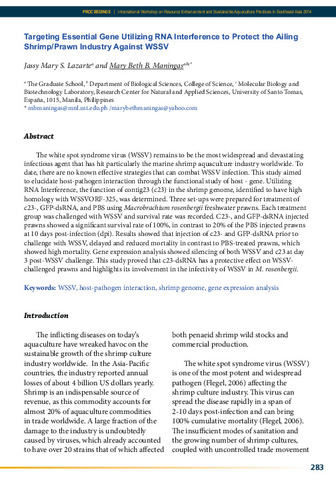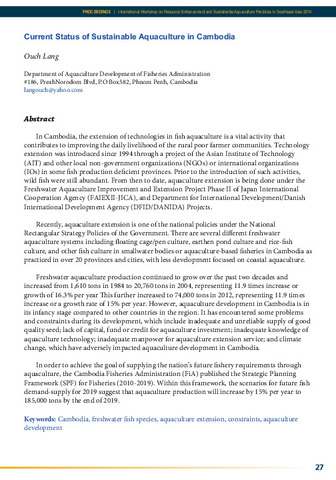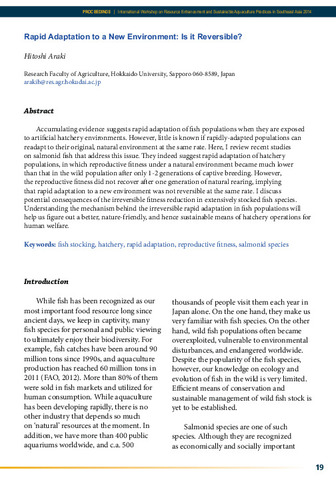02 SEAFDEC/AQD Collaborative Publications: Recent submissions
Now showing items 81-85 of 453
-
Targeting essential gene utilizing RNA interference to protect the ailing shrimp/prawn industry against WSSV
(Aquaculture Department, Southeast Asian Fisheries Development Center, 2015)The white spot syndrome virus (WSSV) remains to be the most widespread and devastating infectious agent that has hit particularly the marine shrimp aquaculture industry worldwide. To date, there are no known effective ... -
Current status of sustainable aquaculture in Cambodia
(Aquaculture Department, Southeast Asian Fisheries Development Center, 2015)In Cambodia, the extension of technologies in fish aquaculture is a vital activity that contributes to improving the daily livelihood of the rural poor farmer communities. Technology extension was introduced since 1994 ... -
Rapid adaptation to a new environment: is it reversible?
(Aquaculture Department, Southeast Asian Fisheries Development Center, 2015)Accumulating evidence suggests rapid adaptation of fish populations when they are exposed to artificial hatchery environments. However, little is known if rapidly-adapted populations can readapt to their original, natural ... -
Culture of Scylla serrata (Forskal) in cement ponds
(Rajiv Gandhi Centre for Aquaculture (MPEDA), 2015)Male and female Scylla serrata juvenile crabs were stocked separately in cement ponds (14 x 8 x 0.8 m; 90 m3) and reared for 90 days. The study was conducted at the Fisheries Research Station, JAU. Okha, Gujarat. The crabs ... -
Status of mud crab aquaculture in Bangladesh
(Rajiv Gandhi Centre for Aquaculture (MPEDA), 2015)Bangladesh has about 710 km of coastlines with 618,780 ha of mangrove tidal flats and 80,000 ha of associated areas which are suitable for brackishwater aquaculture. Mud crab culture has been practiced for many years in ...





